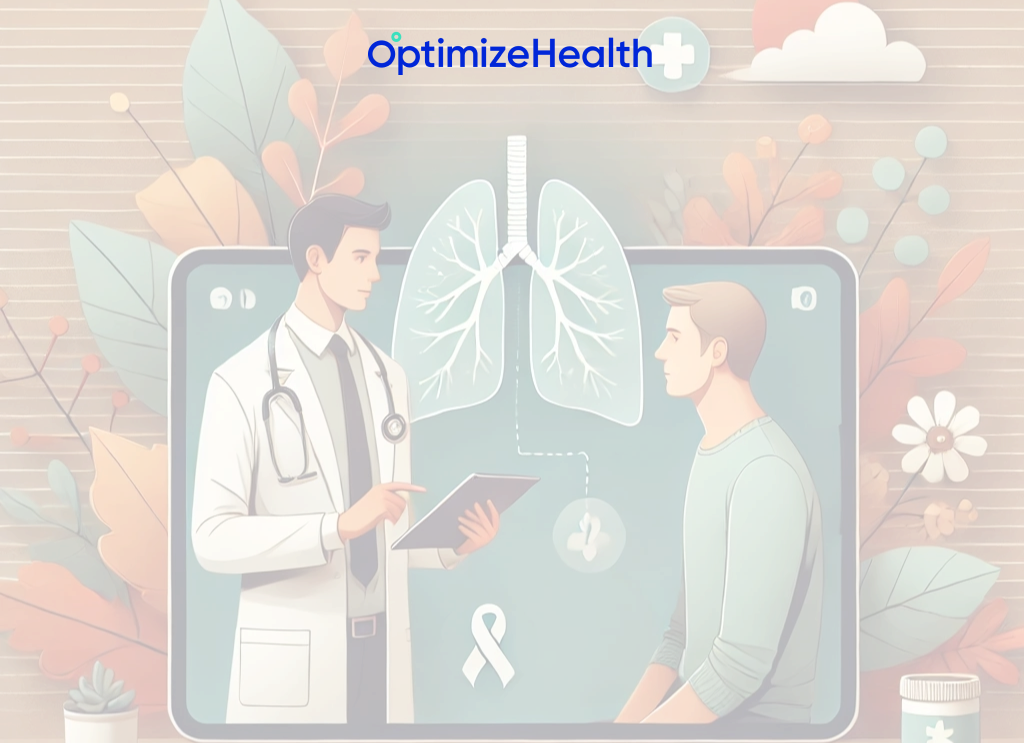Chronic obstructive pulmonary disease (COPD) impacts 11.7 million adults in the U.S. and is the third leading cause of death worldwide. Smoking contributes to over 70% of COPD cases in high-income countries and 14% are caused by exposure to gasses, vapors, dusts, and fumes in the workplace.
During National COPD Awareness Month this November, we want to highlight how proactive, preventative care with Remote Patient Monitoring (RPM) can improve outcomes and reduce costs for millions suffering from COPD.
What is COPD?
COPD actually refers to multiple types of lung conditions where airflow is obstructed and creates difficulty breathing. Emphysema and chronic bronchitis are two of the most common lung diseases and many patients have both. Common symptoms are shortness of breath and persistent coughing. Patients with COPD suffer from frequent exacerbations which can limit daily activities and quality of life. Many exacerbations result in emergency department visits and/or hospitalizations.
Traditional COPD care includes frequent in-person doctor visits where patient-reported symptoms dictate treatment with infrequent testing for lung function. Patients who are not proactively monitoring their symptoms or are unable to visit a clinic regularly are at higher risk for exacerbations that require hospitalization.
The high costs of COPD
In 2021, over 135,000 people died from COPD with 85% of deaths impacting patients 65 years or older. According to the American Lung Association, there were over 335,000 COPD hospitalizations and 925,000 emergency department visits in 2020 with an estimated cost of $50 billion annually.
How RPM can help COPD patients
The challenge with traditional COPD care is that it requires constant patient vigilance of symptoms for self-reporting and little data for physicians. This means it’s difficult to detect changes early and provide proactive care before symptoms dramatically worsen.
RPM inherently solves this with real-time blood oxygen data using an at-home pulse oximeter. Patients simply need to place a cellular pulse oximeter on their finger and readings automatically transmit to their physician’s office, where a monitoring clinician can access the data. With regular monitoring, clinicians can see even small drops in oxygen saturation levels and detect concerning trends.
With early detection of a potential exacerbation, a clinical team can prescribe oxygen therapy or oral steroids to manage symptoms and minimize the flare-up. This can improve the quality of a patient’s life while reducing costly emergency department visits or hospitalizations.
Daily or regular monitoring can also increase a patient’s engagement in their own care and improve medication adherence. Beyond access to data, RPM clinicians regularly check-in with patients to discuss lifestyle choices, healthy habits, and symptom management.
For physician practices that are feeling the impact of staffing shortages, at-home treatment can save valuable in-office appointments for patients that really need them while diversifying revenue. And many remote patient monitoring companies provide clinical monitoring which effectively increases their clinical capacity to care for more patients without hiring new staff.
Results from RPM and COPD clinical studies
Clinical studies have demonstrated the efficacy of RPM in improving outcomes for patients with COPD while lowering costs. COPD has a 7-day prodrome, which is a window of early onset symptoms, before major signs of an exacerbation begin. RPM can provide clinical intervention in this 7-day window which can lead to significant improvements in care.
Outcomes from the clinical study included:
- 65% decrease in unplanned hospitalizations
- 1.28 average reduction in length of stay for cardiopulmonary hospitalizations
- 44% reduction in ER visits
As hospitalization care decreased, utilization of lower-cost outpatient resources increased, including:
- 13.2% increase in outpatient pulmonary visits
- 3.4% increase in prescriptions for steroids
The research demonstrates that with faster access to home-based therapies, RPM can be highly effective in treating COPD and improving the lives of millions of patients suffering from COPD.
Proactive, continuous care improves COPD outcomes
RPM is a highly effective way to provide early intervention to COPD patients while increasing patient engagement with their own care. With regular monitoring and a trusted relationship with a remote clinician, COPD patients can take control of their chronic condition while spending less on healthcare.
For practices short on staff and resources, RPM provides an efficient way to care for more patients with less time. Contact us to see how your practice can improve outcomes for COPD patients and earn additional reimbursement.
